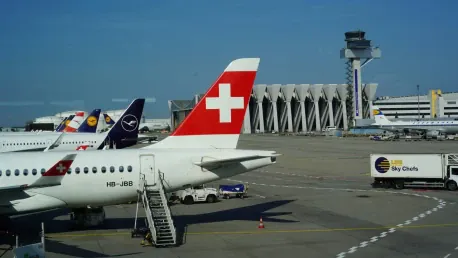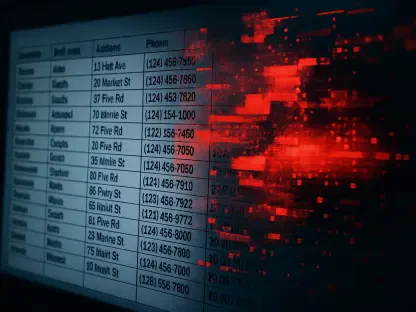Concerns about the aging infrastructure of America’s air traffic control systems have intensified following a United States Government Accountability Office (GAO) report that highlighted the dire state of these systems. Over a third of the air traffic control systems in the United States are deemed unsustainable, posing significant safety risks. This alarming revelation was brought to light during a testimony to the House Committee on Transportation and Infrastructure’s Subcommittee on Aviation. The GAO’s examination of 138 operations revealed that 51 of these systems, or 37%, were unsustainable, while another 54, or 39%, were found to be potentially unsustainable.
Outdated Systems and Maintenance Challenges
Struggles with Aging Infrastructure
Many of the air traffic control systems that are currently in operation are exceedingly outdated, with some having been in use for over six decades, and 72 systems having functioned for more than 20 years. The antiquity of these systems exacerbates the challenge of finding spare parts and adequately trained personnel for maintenance. Heather Krause, the Managing Director of Physical Infrastructure at the GAO, highlighted that the Federal Aviation Administration’s (FAA) reliance on these aging systems presents significant risks to the safe and efficient flow of air traffic. Krause’s testimony emphasized that the outdated infrastructure of the air traffic control systems requires urgent attention to ensure the future safety and efficiency of air travel.
The dependence on outdated technology is not merely about utilitarian functionality but extends into safety implications. These older systems are more susceptible to failures, and such incidents could have catastrophic repercussions in the densely packed airspace of the United States. The maintenance of these systems is becoming increasingly difficult as the availability of spare parts dwindles, and the specialized knowledge required to service them becomes harder to find among the aging workforce. The GAO’s revelation underscores a pressing need for modernization in the FAA’s approach to air traffic control technology to align with contemporary aviation standards and practices.
Maintenance Complexity Exacerbates Risks
The complexity of maintaining such antiquated systems is a multifaceted challenge. Finding compatible replacement parts for systems that have been in operation for several decades is increasingly difficult. The industry faces a decline in the number of professionals who possess the requisite skills and experience to service these aged technologies. Furthermore, these older systems lack the advanced functionalities seen in modern equivalents, such as automated conflict detection and resolution, relying instead on manual intervention. This not only increases the workload on air traffic controllers but also heightens the margin for human error.
The extensive use of these obsolete technologies necessitates a larger workforce of specialized technicians who understand the nuances of these older systems, and this niche expertise is becoming rarer. As a result, the FAA is forced to dedicate considerable resources to training new personnel in outdated technologies instead of focusing on advancing their skills with modern systems. This diversion of resources further delays the much-needed transition to the NextGen systems, perpetuating a cycle of dependency on the aging infrastructure that continues to threaten the safety and efficiency of U.S. air traffic.
NextGen Modernization Delays
Sluggish Progress of NextGen
The FAA’s Next Generation Air Transportation System, known as NextGen, was launched in 2007 with the ambitious goal of modernizing the nation’s air traffic control systems by around 2030. However, the project has witnessed significant delays, drawing criticism for its sluggish progress. Heather Krause drew attention to the disconcerting fact that 17 of the most concerning systems will not see investment completion for at least six years, with some extending to 10 years or more. Adding to the concern, four critical systems remain without any planned upgrades. These delays confirm that the anticipated improvements in safety, efficiency, and capacity within U.S. airspace will take longer to materialize, thereby extending the period during which aviation operations rely on the outdated and unsustainable systems.
The delays attributed to the NextGen project’s implementation stem from various reasons, including technical challenges, funding issues, and external factors like government shutdowns and the COVID-19 pandemic. The inability to expedite the modernization of the existing air traffic control infrastructure can pose significant risks. Each year that passes without the updated systems in place compounds the risk factors associated with the obsolete technology, potentially leaving the national airspace vulnerable to increased inefficiencies and safety hazards. This lag in modernization also affects the competitiveness of the U.S. aviation sector on the global stage.
Recommendations and Legislative Interventions
In 2023 and 2024, the GAO issued recommendations urging the FAA to address the deficiencies in managing the NextGen project and other critical air traffic control investments. These recommendations included the development of a comprehensive risk mitigation plan, a detailed strategy that the FAA has yet to solidify. Although there have been some modernization successes, such as the ahead-of-schedule update of air traffic control tower communication systems, many other aspects of the project continue to face significant setbacks.
Despite recommendations for aggressive structural reforms and management improvements, legislative and administrative inertia has hindered the rapid adoption of these changes. The 2018 government shutdown and the operational disruptions caused by the pandemic further stalled progress and underscored the need for resilient planning and execution frameworks for future initiatives. The glacial pace at which NextGen has moved forward indicates a pressing necessity for systemic adjustments to ensure that the FAA can meet its modernization goals within the remaining timeline.
External Pressures and Controversies
SpaceX and FAA Communications
Senator Edward Markey’s recent concerns about aviation safety have been fueled by remarks from Elon Musk, who criticized the current FAA communications infrastructure. Musk implied that the outdated systems face vulnerabilities, seemingly to promote SpaceX’s Starlink satellite broadband as a preferable alternative. In response, Markey demanded concrete evidence if Musk’s assertions proved valid, hinting at Musk’s potential vested interest in winning FAA contracts for SpaceX. This controversy has added a layer of complexity to the already fraught discussion about air traffic control system modernization.
Adding to the mix, the FAA is contemplating a shift in its $2.4 billion NextGen communications contract from Verizon to Starlink. Musk’s claim that Verizon’s system was near catastrophic failure was later debunked, with findings attributing the issue to a different network managed by L3Harris. This situation underscores the delicate balance required to navigate advancements in communication technology while ensuring that decisions remain fact-based and not tainted by corporate interests.
Maintaining Competitive Integrity
The ongoing debates about switching service providers emphasize the importance of maintaining competitive integrity within the FAA’s decision-making processes. While modernizing the communication infrastructure is vital, it is equally crucial to ensure that changes are motivated by objective evaluations rather than commercial influence. The discussion sparked by SpaceX’s involvement not only highlights the potential benefits of newer technologies like Starlink but also underscores the risk of conflicts of interest clouding the judgment of public agencies tasked with maintaining aviation safety.
As the FAA navigates through these external pressures, it must stay committed to its foundational priorities of safety and efficiency. The potential transition to Starlink could offer numerous advantages, but such a move must be thoroughly vetted to ensure it aligns with the overarching objectives of the NextGen initiative. Balancing innovation with impartiality will be key in steering the future trajectory of U.S. air traffic control systems toward a path that is both technologically advanced and steadfastly secure.
Looking Ahead
Concerns about the deteriorating state of America’s air traffic control systems have grown after a report from the United States Government Accountability Office (GAO) underscored their precarious conditions. The report revealed that more than a third of these systems are in an unsustainable state, raising serious safety concerns. This unsettling information was presented during a testimony before the House Committee on Transportation and Infrastructure’s Aviation Subcommittee. The GAO’s detailed analysis of 138 air traffic control operations showed that 51 of these systems, representing 37%, are considered unsustainable. Additionally, another 54 systems, accounting for 39%, were identified as potentially becoming unsustainable. The findings of this report stress the urgent need for modernization and improvement within the air traffic control infrastructure to ensure safety and efficiency for the future. The aging and faltering systems underscore a critical issue that must be addressed to maintain the reliability and security of air travel in the United States.









